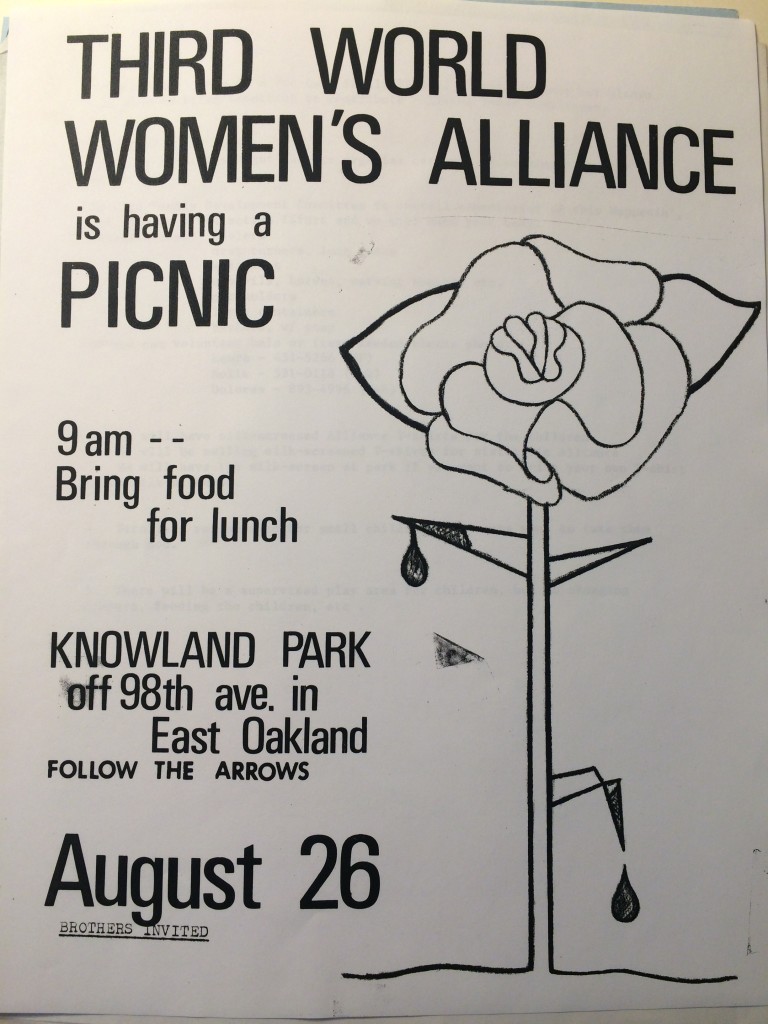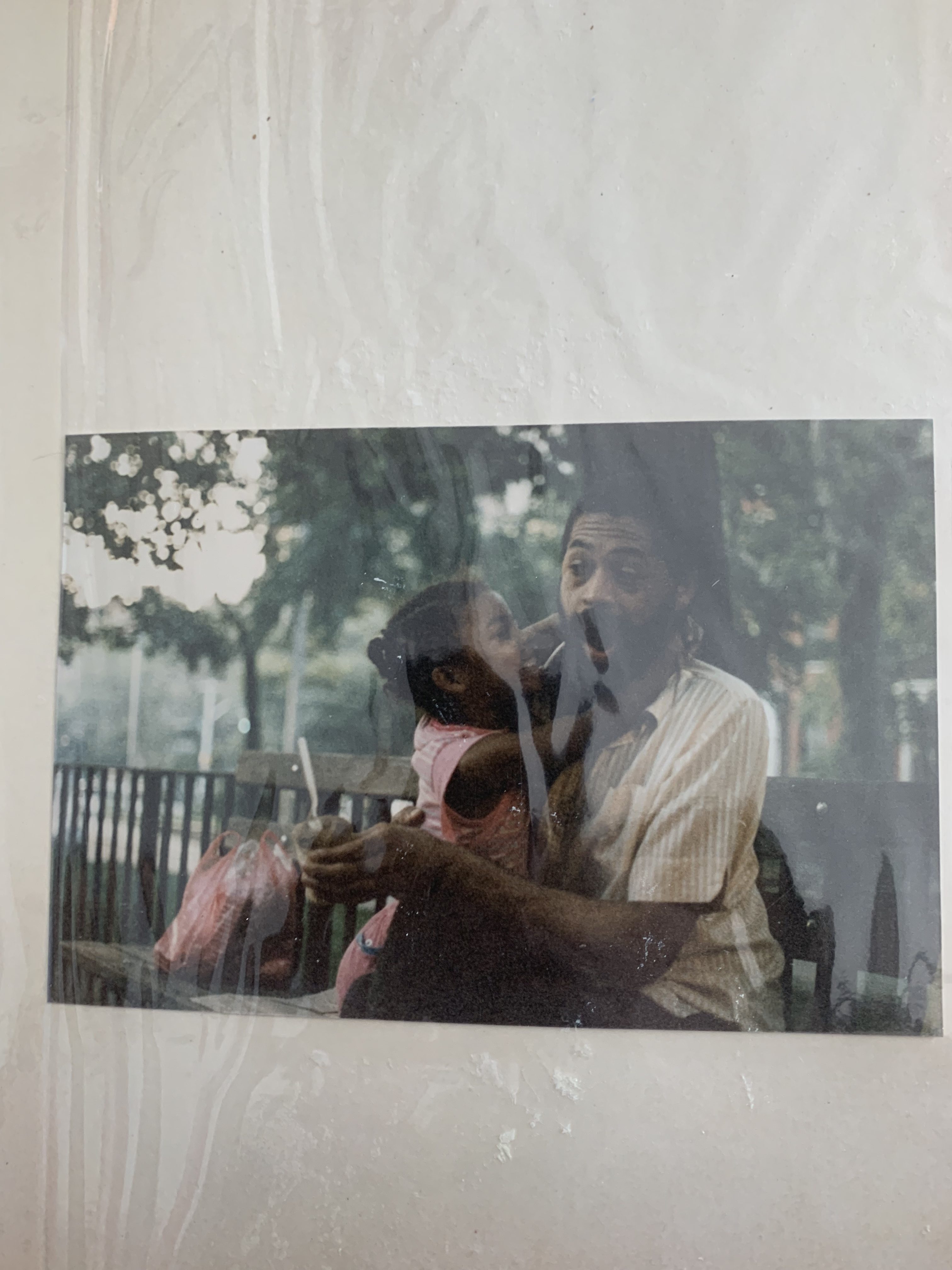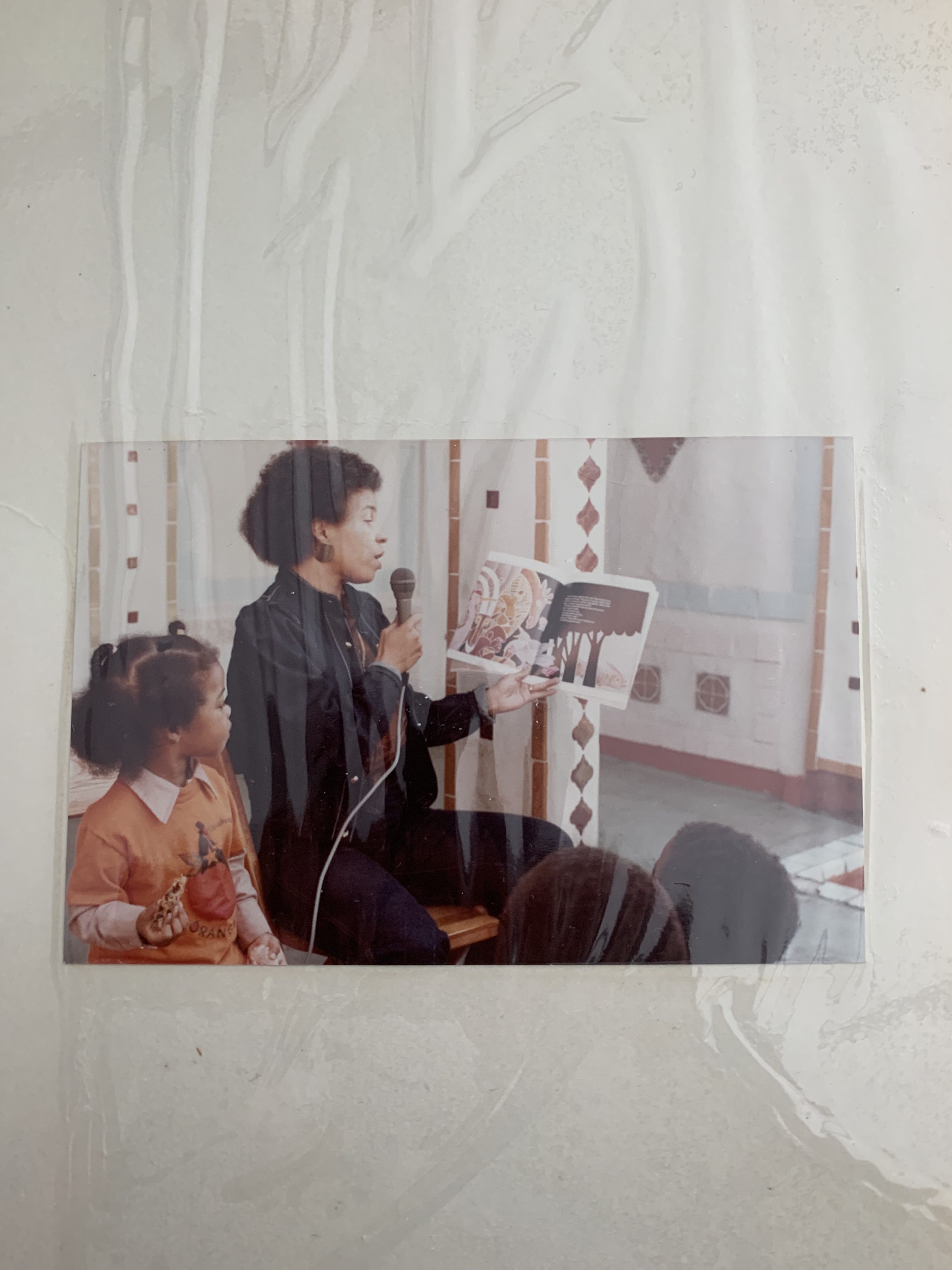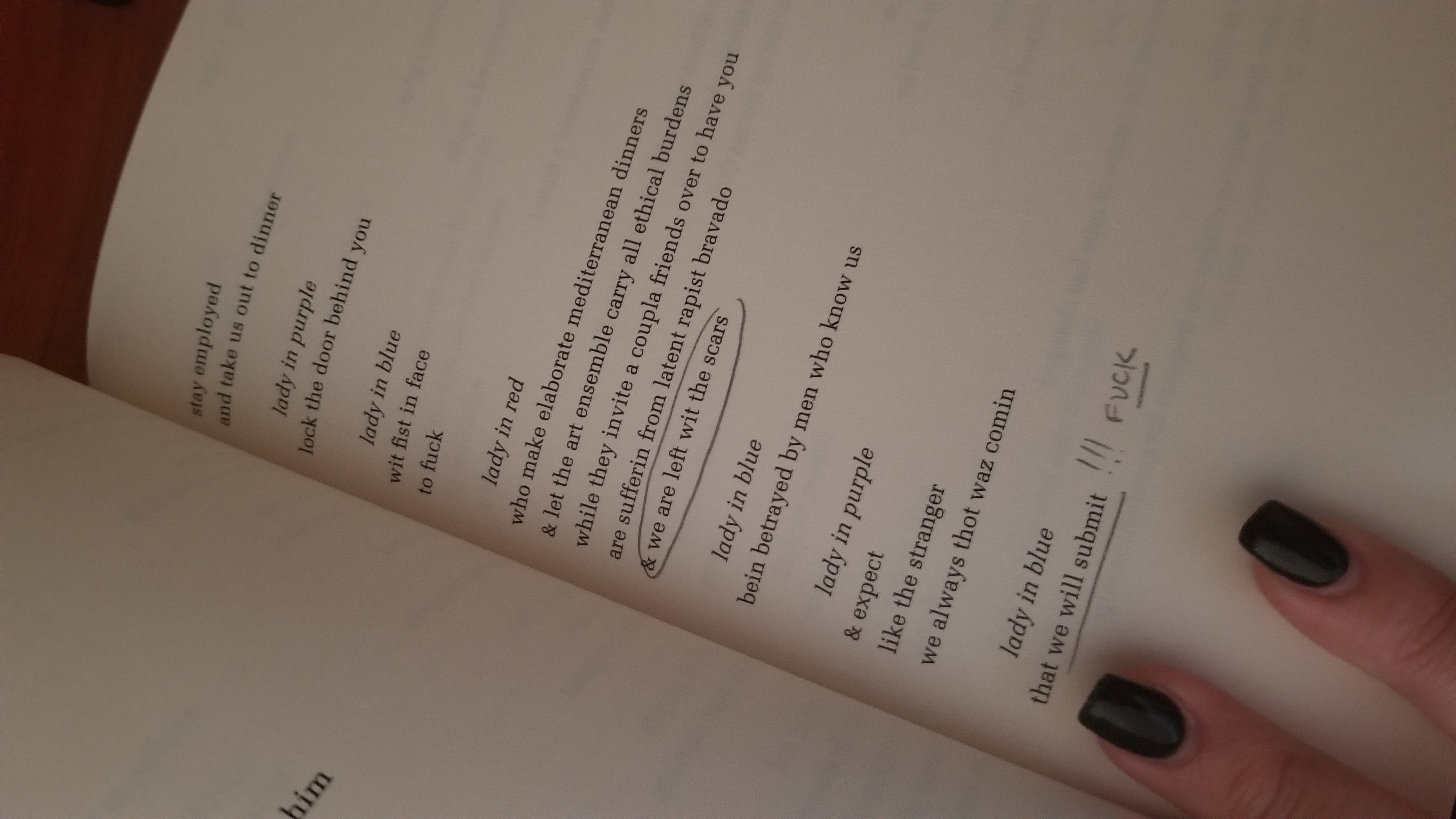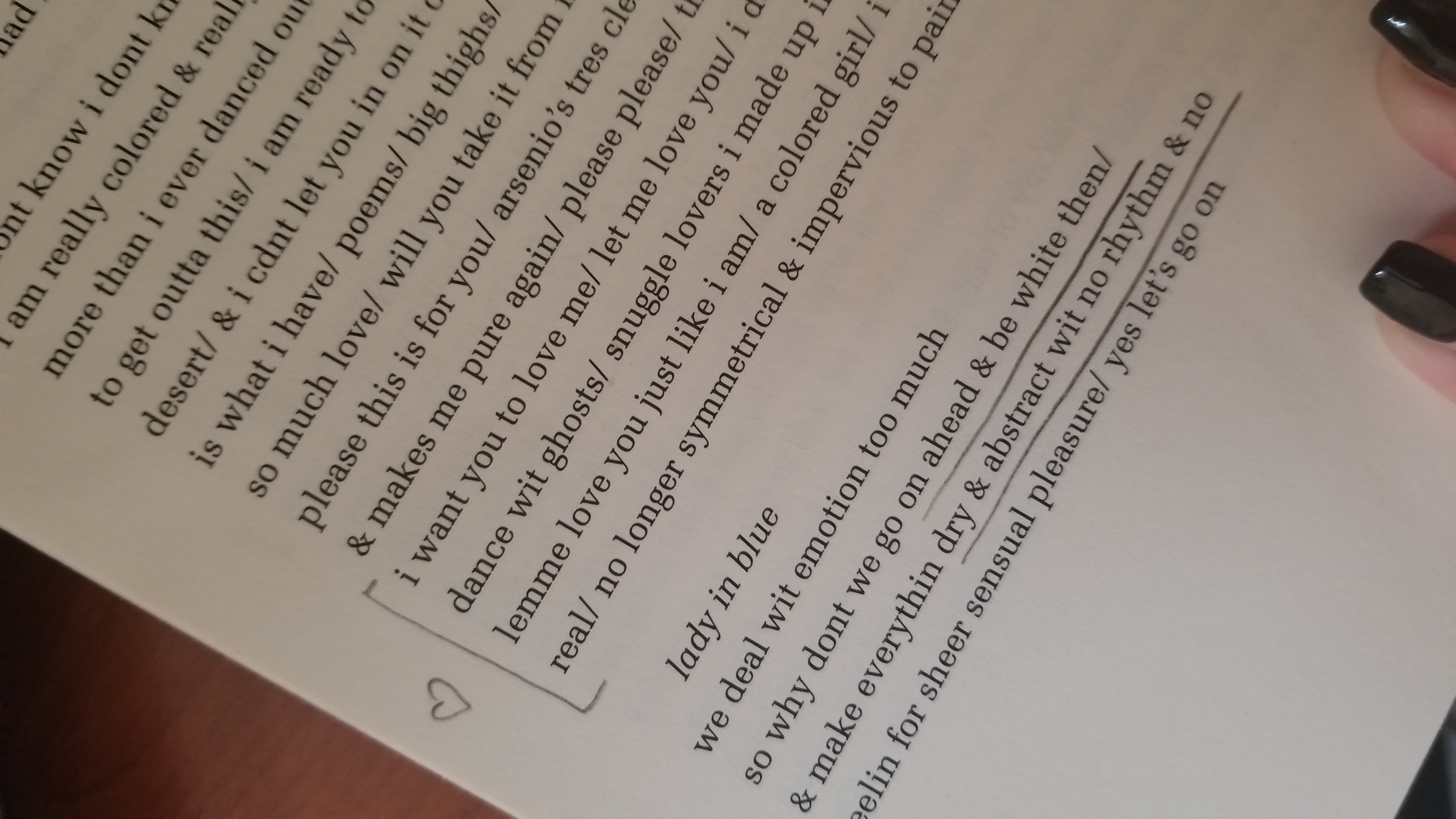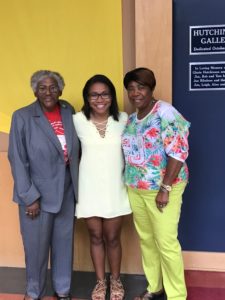The copy of This Bridge Called My Back that I have currently, is actually my mother’s (I say “is” because my mother refuses to let me completely own it out of fear that I will break it). Regardless of my ownership rights, I was particularly amused and later intrigued by the constant markups that my mother made in the margins of the poems. I included scans of one poem that my mom annotated with her reaction to Aurora Morales’s, “…And Even Fidel Can’t Change That!”.
The conversation that we had on Thursday’s class, October 31st, involved the concept of legacy as a result of conscious and unconscious actions taken through writing. When I looked up the definition of legacy in the dictionary there were two definitions: 1) a gift by will especially of money or other personal property and two; something transmitted by or received from an ancestor or predecessor or from the past.
This issue of legacy is further complicated by digital media and technology that pushes physical copies of books, magazines, and anthologies out of our main consumption habits. Both Cassius Adar and Lisa Nakamura address the consequences of digitally produced copies of This Bridge in “The Digital Afterlives of This Bridge Called My Back: Woman of Color Feminism, Digital Labor, and Networked Pedagogy”. Critical to their argument is understanding that, according to them, pedagogy is deeply interpersonal where “instruction flows from person to person, group to group” (Adar 259-60). Even though digitally pirated copies of This Bridge attempted to literally bridge marginalized communities and the academic world, it exploits the labor of these writers to create an inclusive anthology and furthermore, risks eliminating any of the interpersonal and intimacy associated with physical printed copies.
Therefore, according to Adar and Nakamura’s standards, I am incredibly privileged to have access to a printed copy of This Bridge. Furthermore, the effects of the “construction and maintenance of a social network” were directly felt upon reading the poem, and my mother’s handwritten comments in the margins. In reading these comments I inherited the legacy of Morales’s “separation” from internationalism in Latin America. Perhaps – although I’m not quite sure if I’m ready to ask her this yet – my mother (and Abuela) also experienced a similar form of separation.
I find that part 13 beautifully summates legacy as it applies to the definition provided by Merriam Webster and our conversation in class this past Thursday. “The relationship between mother and daughter stands at the center of what I fear most in our culture. Heal that wound and we change the world” (Morales 56). My mother never wrote in that last section of Morales’s essay, but I feel as though that was a conscious decision my mother made in determining the legacy of her words as she applied it to my separation from internationalism in Latin America. And while I completely understand the need for digital copies for accessibility reasons, I know that my understanding of legacy would be difficult to interpret had she had a digital copy.


